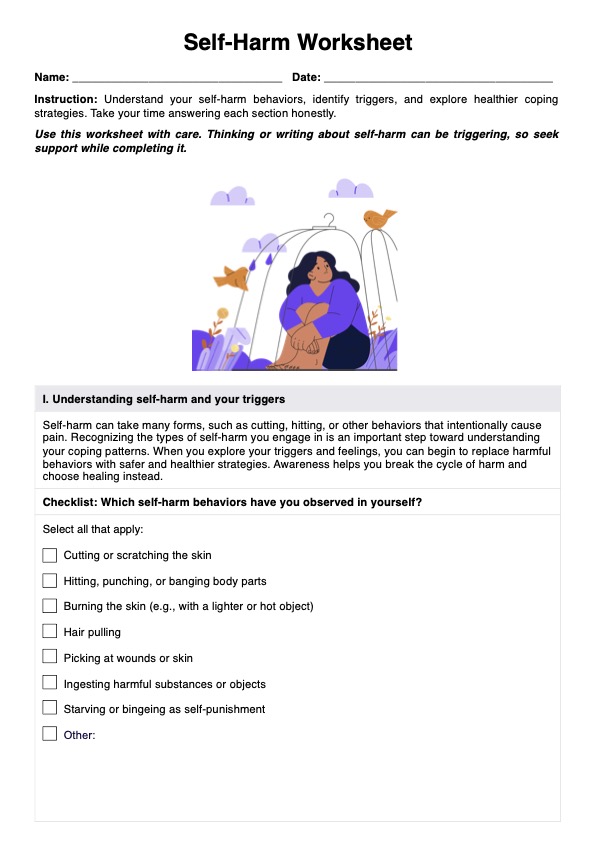The time taken varies depending on the individual. It's essential to take your time and reflect deeply at each step.

Self Harm Worksheet
Help your clients identify triggers and build healthy coping skills with this easy Self-Harm Worksheet. Download now to support their healing journey.
Use Template
Self Harm Worksheet Template
Commonly asked questions
The worksheet helps by providing a structured approach to understanding self-harming behaviors, identifying triggers, and developing healthier coping mechanisms.
Anyone dealing with self-harm can use the worksheet. Healthcare professionals can also use it as a therapeutic tool to guide their patients.
EHR and practice management software
Get started for free
*No credit card required
Free
$0/usd
Unlimited clients
Telehealth
1GB of storage
Client portal text
Automated billing and online payments











